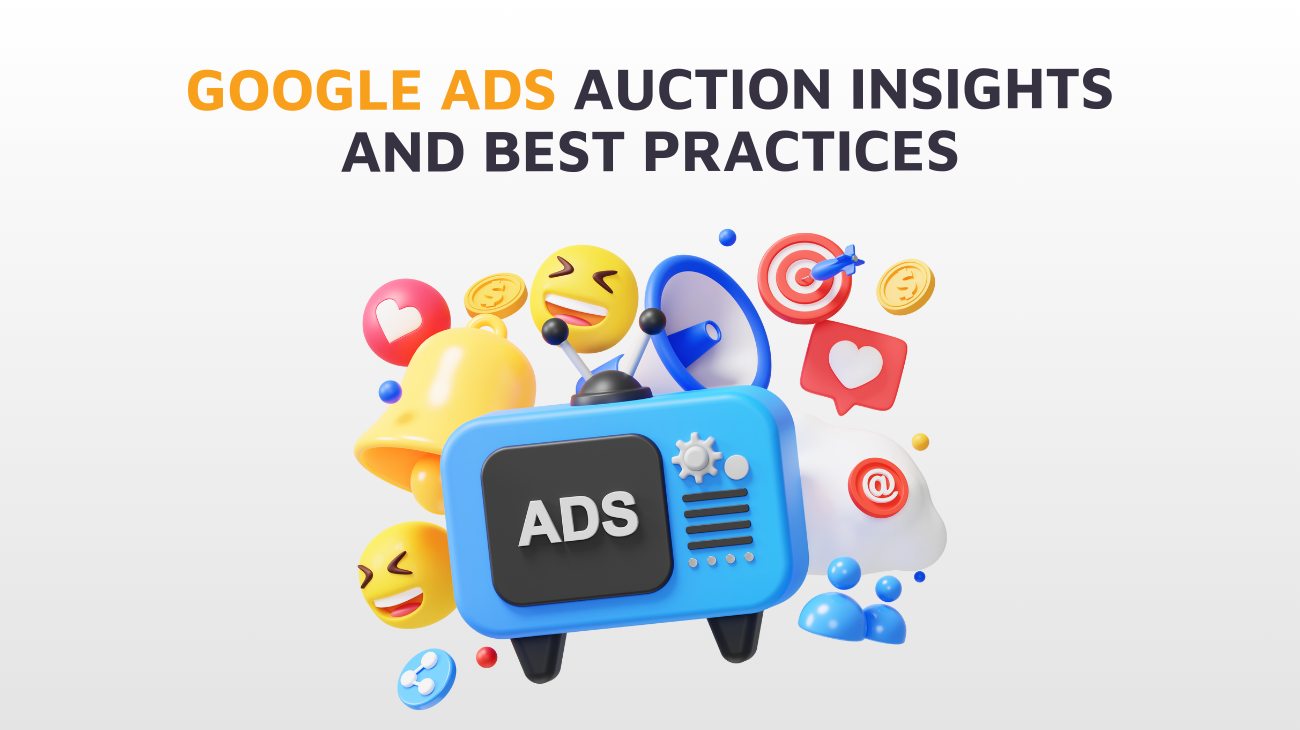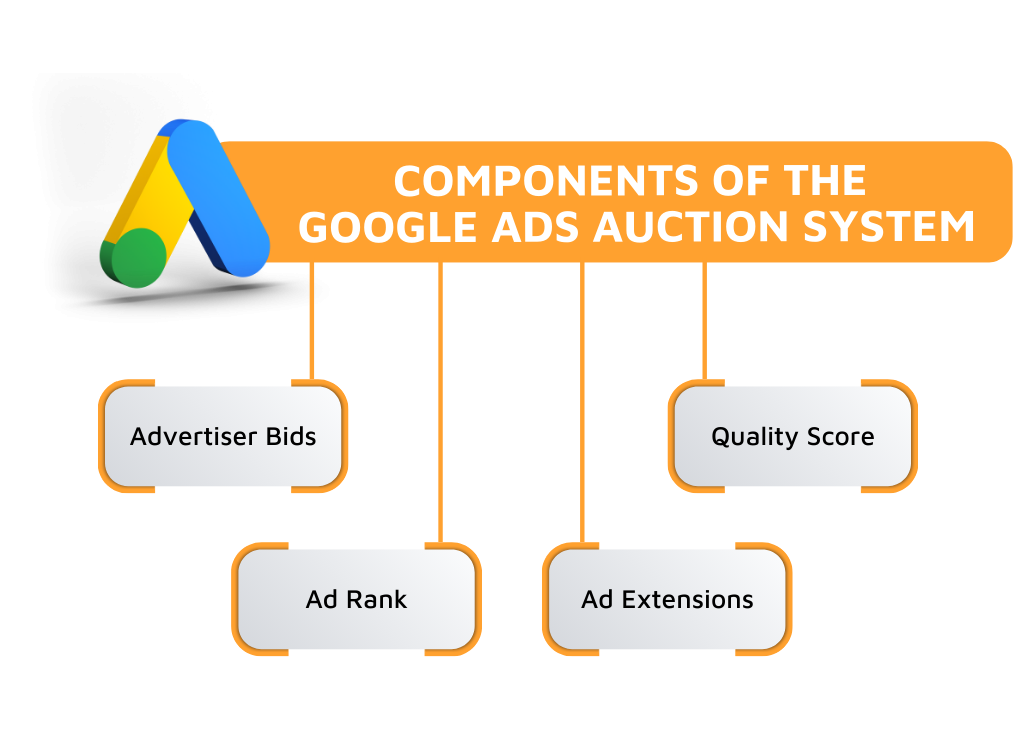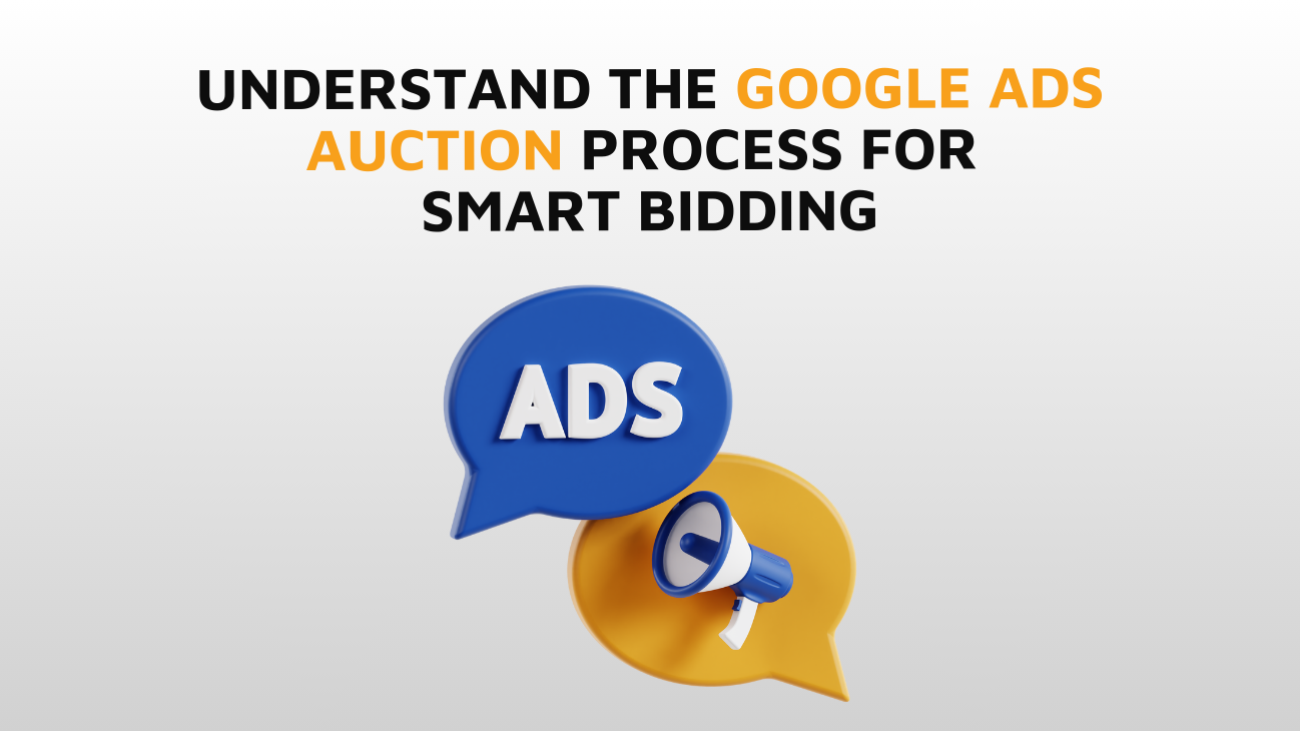Google Ads operates on an auction system that determines the placement and cost of ads on Google search results and other platforms. Unlike traditional auctions where the highest bid wins, Google’s ad auction is designed to balance bid amounts with ad quality to ensure a relevant and engaging user experience. Understanding this system is essential for anyone looking to make the most out of their advertising campaigns.
What is the Google Ads Auction?
The Google Ads auction is a real-time bidding system that decides and chooses which ads will be displayed on Google's search results pages (SERPs) and other Google properties. The auction pits advertisers against each other, with the winning ads being the most relevant, engaging, and profitable for Google.

How Does the Google Ads Auction Work?
The auction process begins when a user searches or visits a site that displays Google Ads. Google then identifies all the ads with the eligibility to appear based on the user’s search query or website’s content. From these eligible ads, Google selects the ones that meet certain quality thresholds and ranks them based on a combination of factors, including the bid amount, quality score, and the impact of ad extensions.
The ad with the highest rank is typically displayed in the top position, with subsequent ads appearing in descending order. However, it’s important to note that the actual cost per click (CPC) paid by the advertiser is not always equal to their bid. Instead, it is determined by the ad rank of the advertiser below them, divided by their quality score, plus a small increment.
Read our recent blog for more awareness. Top 9 Types of Google Ads and When to Use Them
Components of the Google Ads Auction System

1. Advertiser Bids
Bids are crucial in determining your ad’s position in the auction. Advertisers set bids for how much they are willing to pay for a click on their ad. This bid represents the maximum cost they are willing to pay for each click on their ad. However, it doesn’t mean that every click will cost that much. The exact CPC (cost per click) is dependent on the competition and auction dynamics.
2. Quality Score
Google assigns a quality score to each ad based on its relevance, expected click-through rate (CTR), and the quality of the landing page. A higher quality score will result in better placements of ads and lower costs.
3. Ad Rank
Ad rank is a metric that Google uses to determine the position of an ad in the auction. It combines the advertiser’s bid with the Quality Score. A higher ad ranking indicates better ad placement.
4. Ad Extensions
Ad extensions increase the exposure and appeal of your advertisements. Site links, callouts, and structured snippets are all examples of ad extensions.
Google Ads Auction Process

1. Keyword Selection
Advertisers choose keywords relevant to their business that users search for and select them for bidding.
2. Auction Time Bidding
At the time of a search, Google runs the auction to determine which ads will be shown.
3. Determining Ad Position
The combination of the bid amount and Quality Score is used to calculate the Ad Rank. Ads with higher Ad Ranks are displayed in more prominent positions on the search results page.
4. Cost Calculation
The actual cost per click (CPC) is determined based on the competition and the Ad Rank of the next highest competitor.
Click here to learn more about 7 Tips for Google Ads Optimization to Create Powerful Impact
Auction Dynamics and Bidding Strategies
1. Bid Management
Effective bid management involves adjusting bids based on performance data. Bidding strategies can be manual or automated, with options like Enhanced CPC, Target CPA, and Maximize Clicks.
2. Automated Bidding
Google offers automated bidding strategies that optimize bids in real-time to achieve specific goals, such as maximizing conversions or return on ad spend (ROAS).
3. Competitive Bidding
Setting competitive bids can enhance the chances of winning the auction. Tools and insights from Google Ads can guide how your bids compare to others.
Factors Affecting the Google Ads Auction
1. Bid Amount
Your bid amount is the auction’s important aspect. Generally, the higher your bid, the more likely your ad will be shown in a higher position. However, it’s important to balance your bid amount with your budget and target return on investment (ROI).
2. Ad Score
A key factor in the auction is the Quality Score, which affects both ad position and cost. Considering ad relevance and improving landing page quality can optimize the Quality Score.
3. Ad Relevance
In the auction, ads that closely match the user’s search query and intent typically do better. Relevant ads improve the user experience and increase the likelihood of higher placements.
4. Landing Page Experience
The quality of the landing page, including its loading speed and mobile-friendliness plays a significant role in ad selection. Google wants to ensure that users who click on your ad are taken to a high-quality page that provides a good user experience.
Understanding Google Ads Auction Costs
1. Cost Per Click (CPC)
CPC is the amount paid by the advertiser for each click on their ad. The actual cost per click is frequently less than the maximum offer due to the competitive nature of the auction.
2. Cost Per Acquisition (CPA)
CPA is the cost associated with acquiring a customer through a click. Optimizing bids and improving ad quality can help reduce CPA. It is calculated by the total cost of the campaign divided by the number of acquisitions.
3. Return on Ad Spend (ROAS)
ROAS compares the money gained by ads to the amount spent. It helps evaluate the effectiveness of ad campaigns and adjust strategies accordingly.
Google Ads Auction Insights and Best Practices

1. Regular Monitoring and Optimization
Regularly checking, analyzing and adjusting the campaign performance based on insights can improve results. Focus on metrics like CTR, conversion rate, and Quality Score.
2. A/B Testing
Conduct A/B tests to determine which ad variations perform best. Testing headlines, descriptions, and calls to action can help refine your ad strategy.
3. Benefiting from Extensions
Use ad extensions to provide additional information and enhance ad visibility. Extensions like site links and callouts can improve click-through rates and ad performance.
4. Utilizing Automation
Google’s automated bidding strategies can be used to optimize bids and achieve campaign goals. Automation can save time and improve bid accuracy.
Conclusion
The Google Ads auction system is a complex yet essential component of digital advertising. Advertisers can effectively manage their campaigns and achieve better results by understanding its components, processes, and dynamics. Implementing best practices and continuously optimizing strategies will lead to more successful ad campaigns and a higher return on investment.
Frequently Asked Questions
What is the new update of WhatsApp 2023?
WhatsApp has introduced a new feature of screen sharing during video calls to make meetings convenient and helpful.
Is it safe to use WhatsApp video calling for meetings?
WhatsApp chats and calls are end-to-end encrypted and no one can read or listen to your messages even WhatsApp themselves.
How can I share the screen with other participants in the video call?
You can easily share your screen by clicking on the “Share Screen” icon displayed next to the video icon.
Can I control what content is being shared during the screen-sharing feature?
Yes! With the screen-sharing feature, you have the choice to share either a specific app or your entire screen. This gives you control over what content you want to showcase to the other participants.
About CyberX Studio
CyberX Studio is a one-stop solution to all your digital marketing problems. We transform your business’s digital presence by rendering data-driven, timely and well-strategized services. Collaborate with us and let the magic begin!


